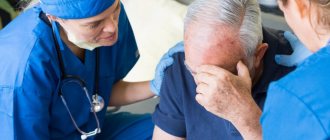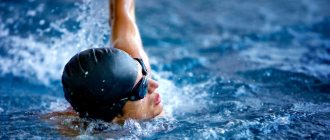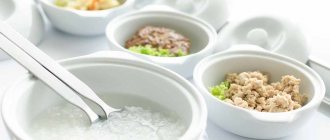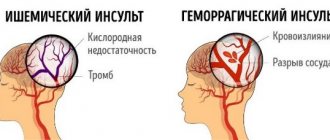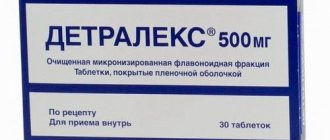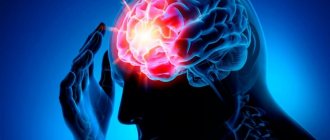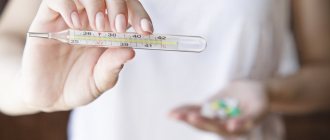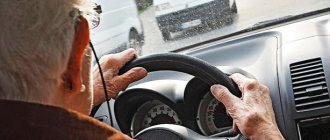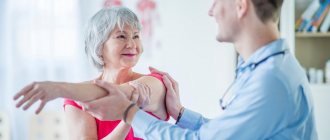Unfortunately, in our time, strokes occur too often. Modern medicine has effective treatment methods that save people from death. But what to do then, after salvation? Life after a stroke changes in significant ways. Some people remain disabled until the end of their days, while others make attempts to restore lost functions. This mainly refers to disturbances in movement, memory, and speech. If a small area of the brain is damaged, a person returns to normal life faster; significant improvements can be observed after a few weeks. In any case, a lot of effort must be made to ensure that the rehabilitation period is effective. It is important to adhere to the main principle: never give up and systematically train your speech and body. In this case, it is not necessary to be in hospital treatment. All workouts can be done at home. Moreover, houses and walls help.
According to statistics, 5-6% of people who have had a stroke need constant care. But everyone has a chance for a quick and full recovery.
Why don’t people want to recover after a stroke?
The success of rehabilitation depends on the patient’s mood. People who have had a stroke may seem indifferent to their health. Very often they become irritable, aggressive, and whiny. They follow the doctor’s recommendations without much desire and prefer to lie down and watch TV. But with this approach there is no hope for a quick recovery. Relatives and friends need to muster all their will in order to successfully overcome the consequences of the disease. For some, it is enough to understand that the patient’s whims are not the result of laziness or bad character, but a consequence of damage to certain areas of the brain. Therefore, the primary task of loved ones is to help patients overcome their reluctance to exercise.
The rehabilitation period can last a long time, so both the patient and his family need to be patient. The effectiveness of the procedures depends on their systematicity and high-quality implementation.
Long-term rehabilitation
The duration of rehabilitation measures is not limited in time. Because, due to individual characteristics and the degree of damage, on average, the restoration of lost skills occurs after 3 years. This time is enough for patients to adapt to new living conditions. And for relatives - to improve their daily life and resolve issues regarding care.
At the same time, patients are able to learn small everyday movements: pouring water into a cup, turning the key in the lock, etc. Some patients may receive a new specialty to work from home.
Rehabilitation program and its features
Recovery after a stroke is facilitated by a whole range of different activities:
- professional massage and special physical education;
- work to restore memory and speech;
- psychological and social assistance;
- prevention of possible complications that occur after a stroke.
According to the recommendations of doctors, the patient should be treated 1-2 times a day, provided he is in good health. To perform certain physical exercises and exercises aimed at restoring memory and speech, 35-40 minutes of exercise is sufficient. What to do if a person feels weak, has shortness of breath, dizziness, or high blood pressure? You don't have to give up classes altogether. It is enough to reduce them to 10-15 minutes.
Try to add variety to your workouts more often. If the patient is already getting up and moving around, encourage him to walk on grass, sand, stones and other uneven surfaces. After a while, you can move on to climbing a hill or even climbing stairs. The main thing is not to rush things. For walking, you should choose orthopedic shoes or high boots, in which the foot is well supported.
Every day, teach your loved one something new: hold a spoon, fasten a zipper, put on shoes, turn a faucet on and off, answer a phone call, and so on. It is very important to help him. But you shouldn't try to do the work for him if you don't want to interfere with the recovery process.
Important point! The rehabilitation period should take place in a calm atmosphere. Therefore, be patient and do not get nervous when a person tries to do something on their own. Spilled water? Broke a plate? No problem, solve the problem with a smile and continue learning. It is vital for people who have suffered a stroke to feel needed. Therefore, you can safely involve them in doing simple housework.
Features of motor function recovery after stroke
Movement disorders are rightfully considered one of the terrible consequences of a stroke. They are expressed in partial or complete immobilization of the legs and arms.
Among the main methods used to restore motor functions are:
- electrical stimulation is a physiotherapeutic method based on the effect of pulsed electric current on the body;
- therapeutic physical culture (physical therapy);
- massage;
- biofeedback is a method, the essence of which is to “return” the values of physiological indicators to patients (information is displayed on a computer screen).
The ideal solution is to combine several methods. With any approach, there is no need to tire the patient with lengthy procedures or intense training. The load should be increased gradually.
A little remodeling of the apartment wouldn't hurt. Specially equipped handrails, as well as chairs for support, will make life easier for the patient.
Late period
It is a continuation of the initial period and can last up to 6 months. The best option is to continue rehabilitation therapy in a specialized medical facility. The average length of stay is 3 weeks, but may vary depending on the general condition of the patient. There, a psychotherapist always works with the person, and autogenic training is carried out.
Therapeutic gymnastics classes continue with the introduction of new exercises and an increase in the load of physiotherapy - acupuncture, mud therapy and balneotherapy. It helps improve motor performance, delivery of nutrients to muscles and relaxation of the central nervous system.
If the speech defect persists, classes are held with a speech therapist. In a specialized class, they re-teach self-service in everyday life. The classes are aimed at re-learning how to hold a spoon and other skills that the patient could perform without difficulty before the impact.
Rehabilitation is necessary to eliminate apathy and depressive states, leading to the emergence of the will to live.
To minimize the consequences of an ischemic stroke, there is only the first 4.5 hours
— Alexander, what happens in the body during a stroke and why are its consequences so serious?
— A stroke is an acute disorder of cerebral circulation when the blood supply to any part of the brain is cut off. The blood supply is disrupted - and damage or death of brain cells occurs, and this leads to disruption of any body function - speech, movement of the limbs, mental abilities, attention, memory, etc.
— Why is cerebral circulation disrupted?
- A stroke occurs either due to a blockage of a blood vessel that supplies the brain (ischemic stroke) or when a blood vessel in the brain ruptures (hemorrhagic stroke).
Blockage of the vessel can be caused by the formation of atherosclerotic plaques (fatty deposits) or a blood clot that enters the bloodstream and causes a blockage of the artery.
Vessel rupture during a hemorrhagic stroke usually occurs in the softened artery wall: blood leaks out and accumulates, which leads to compression of brain tissue and cell damage. In both cases, as a result of a lack of oxygen, some brain cells at the site of the stroke die, and some are damaged.
Within minutes, the person loses the ability to reason, speak, or move their arms or legs.
about possible contraindications, consult a specialist
- What symptoms indicate a stroke?
— There is a simple test that will help relatives recognize a stroke. You need to ask him to do only three actions: smile, raise both hands and say his name. If the corner of the mouth droops when smiling, if a person cannot raise his arms because one of them is weak, and if he pronounces his name unintelligibly, call an ambulance immediately.
Remember: in case of an ischemic stroke, to effectively remove a blockage of a vessel (thrombus), there is only 4.5 hours until the cells of the damaged area are completely dead.
Signs of a stroke may also include:
- sudden numbness of the face, arms, legs, weakness in the limbs,
- sudden loss of consciousness, loss of ability to speak, difficulty speaking, loss of ability to understand the meaning of someone else’s words,
- sudden loss of vision in one or both eyes,
- sudden disturbance in gait, dizziness, loss of balance,
- sudden severe headache of unknown cause,
- sudden nausea, pain in the face or limbs, general weakness (more often in women).
— Why is it so important to seek medical help in the first hours after a stroke?
— A stroke is an emergency. Medical care is most effective only in the first 3-5 hours: this is the so-called therapeutic window, during which treatment can restore damaged brain cells and minimize the consequences of a stroke. If you do not seek help in time, the cells will die irrevocably, and further treatment will be aimed only at adapting to life, taking into account the existing disorders.
about possible contraindications, consult a specialist
— How is a microstroke different from a regular stroke? Is it just as dangerous and also requires treatment?
— A microstroke, or transient ischemic attack (TIA), is a temporary disruption of the blood supply to part of the brain, that is, a harbinger of a stroke. During a TIA, a person may experience some or all of the symptoms described above.
The peculiarity of a micro-stroke is that these symptoms are usually mild and pass quickly - the next morning a person can feel great.
But take them seriously - be sure to call an ambulance! Your health and life depend on it.
Contraindications
Rehabilitation is contraindicated in the following cases:
- the patient is in a coma;
- pronounced aggressive behavior caused by mental disorders;
- recurrent stroke in old age;
- severe diabetes mellitus;
- convulsive syndrome;
- tuberculosis;
- malignant neoplasm.
The likelihood of a full recovery after a stroke is low, but you shouldn’t give up. Accurate adherence to medical recommendations will allow you to achieve better results.
Nordic walking
The peculiarity of Nordic walking with poles resembling ski poles is that it allows you to evenly distribute the load across 90% of the muscles of the body. In the same way, it redistributes pressure on the joints. This is important for older people, who often suffer from joint pain in the lower extremities.
We recommend adding Nordic walking to your rehabilitation program after a stroke because it:
- strengthens the cardiovascular and respiratory systems;
- improves coordination of movements and the body’s ability to maintain balance;
- reduces cholesterol levels;
- speeds up metabolism;
- improves mood.
While walking, you need to monitor your breathing - the inhalation time should be almost 2 times less than the exhalation. You also need to monitor your pulse. The heart rate (HR) should be only 30% higher than normal. That is, when walking with poles, you do not need to accelerate much.
The duration of classes is increased gradually, starting from 20 minutes. The length of the stick is calculated as follows: x * 0.65. Where x is your height.
How not to harm yourself
If you experience heart/side pain or dizziness while jogging, something has gone wrong. You need to stop, take a breath and count your pulse. Normal number of beats per minute for different ages:
✓ 30 years – 162;
✓ 40 years – 157;
✓ 50 years – 152;
✓ 60 years – 147;
✓ 70 years – 142;
✓ 80 years – 137.
You can't run on a full stomach. While jogging, you need to monitor uniform breathing and correct posture, and periodically reduce the pace.
There are contraindications for jogging:
- atherosclerosis;
- bronchial asthma;
- thrombophlebitis and varicose veins;
- hypertension;
- heart attack suffered earlier than 12 months;
- uncompensated diabetes mellitus;
- stage 3 obesity;
- viral and infectious diseases in the acute stage;
- chronic lung diseases;
- liver cirrhosis etc.
I run correctly after a stroke: technique
When running, the insides of the feet should be parallel to each other, with the toes slightly turned outward. You need to place your foot so that the weight is redistributed from heel to toe. When moving your legs, you need to make sure that your shins are relaxed, that is, the main load falls on your hips and knees.
To reduce wear on the joints, you need to straighten your knees smoothly, do not raise them too high, and do not sway from side to side.
You should move easily, with medium steps, keeping your body vertical (let's say a slight lean forward). Your arms should be bent at right angles, your gaze directed forward about 30 meters. Shoulders and neck need to be relaxed.
Scrupulous execution of the technique will reduce tension in joints and muscles, and also prevent injuries during jogging.
